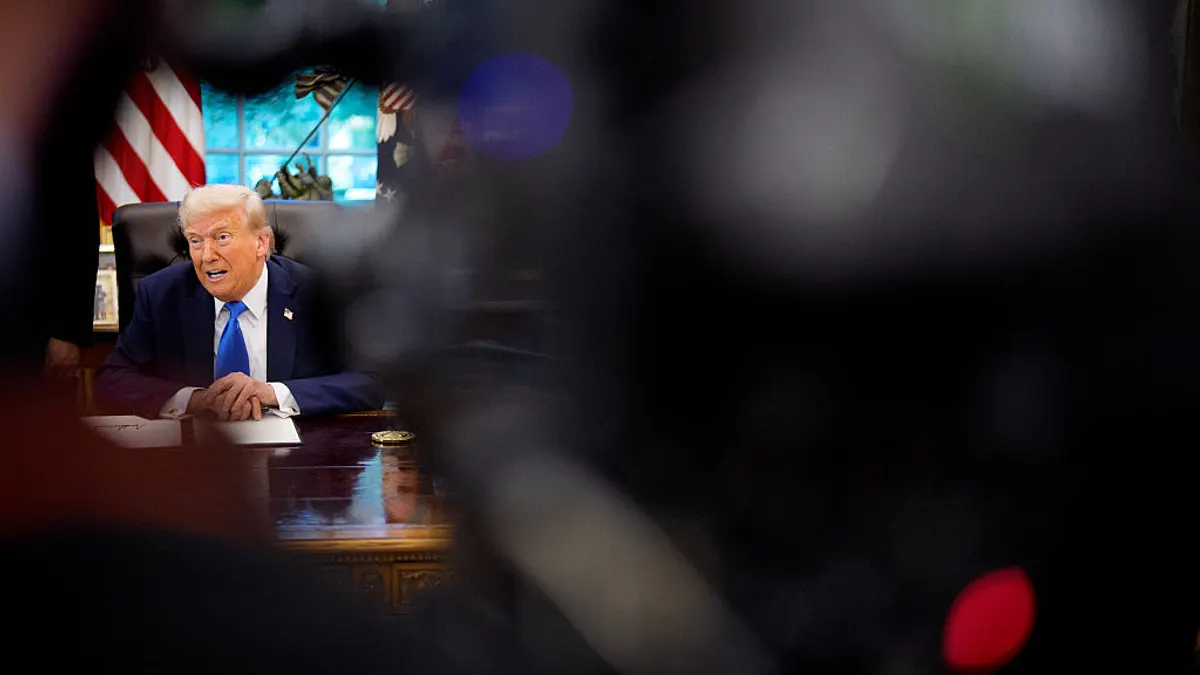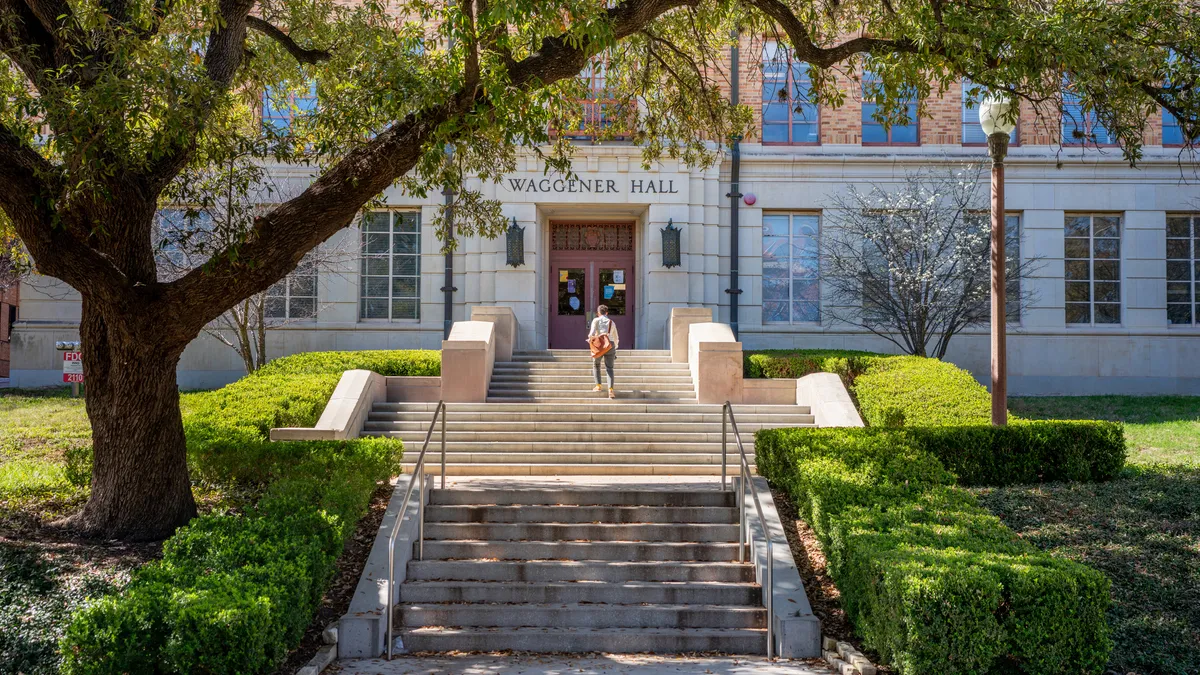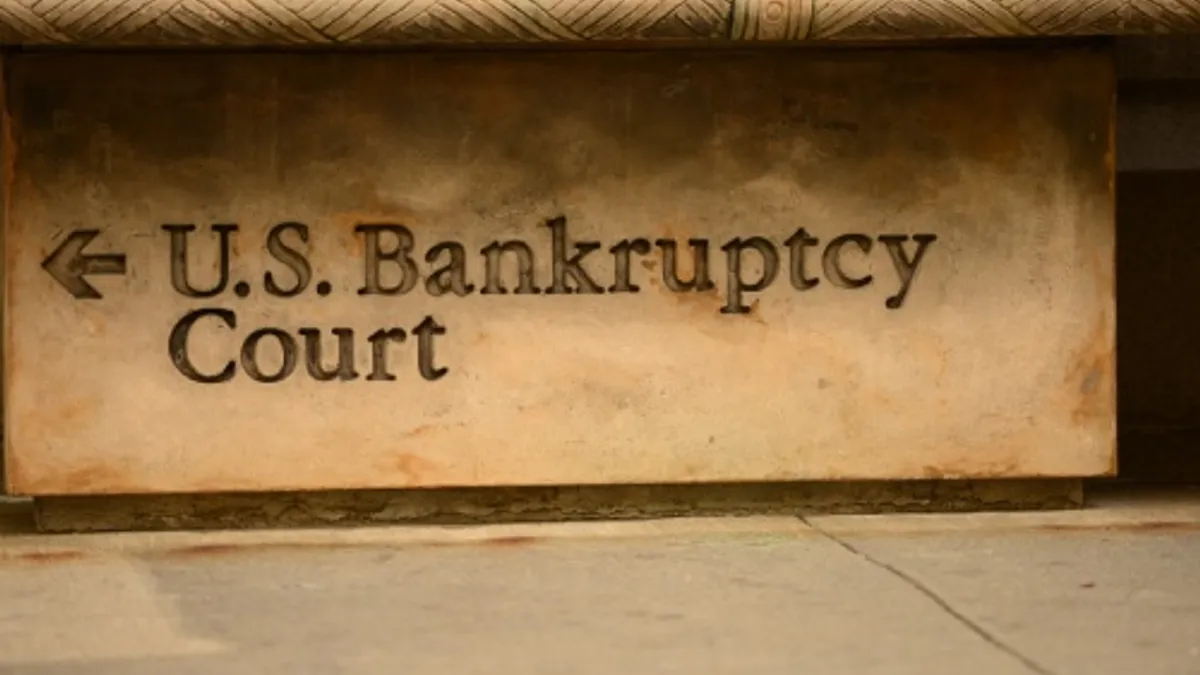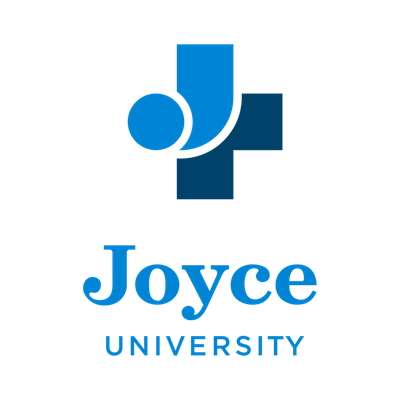"And the day came when the risk to remain tight in a bud was more painful than the risk it took to blossom." – Anais Nin
The Educause Annual Conference 2013 kicked off Wednesday as noted educationalist and author Sir Ken Robinson took the stage to challenge those in attendance to overcome the culture they’ve become accustomed to and welcome innovation.
This was, of course, after Robinson, who delivered TED’s most-viewed talk of all time in 2006 and was knighted by Queen Elizabeth in 2003, had some fun with the packed exhibit hall.
“Is it morning? Whose idea was this honestly?” Robinson said, noting the “fateful” call from Educause one year ago that resulted in his appearance. “What they didn’t mention was they wanted me to do the opening keynote at 8 o clock in the morning. This is insane. Next year I’m going to do the second keynote…which is at a decent, civilized hour.”
Robinson would continue to humor the audience for the duration of his speech, but his underlying message was serious: Innovation happens, whether the powers that be have prepared for it or not. When the TV was first introduced, he says, The New York Times ran a piece noting that it would never replace the radio in America because it required people to sit immobilized in a chair, whereas the radio still allowed them freedom to move about doing something else. Sitting stationary and staring straight forward, it turned out, ended up being the television’s appeal. TV, of course, went on to change culture.
Likewise, he said, a government didn’t plan rock and roll, and Steve Jobs and the rest of Apple, when planning the iPhone, likely never anticipated an app that allows the device to be played like a blues harmonica. “Don’t forget! It’s vital that you can play the delta blues on this thing, because we all know that these things will be used by educators and business people, and they are prone to compassion. They’ll come out of faculty meetings and they’ll want to channel Howling Wolf.”
His point was that people appropriate brilliant ideas and see what they can do with them. These ideas have obvious parallels to current disruptive forces in education, like MOOCs.
With Robinson’s keynote in mind, there are three questions higher ed professionals should be asking themselves.
1. ARE WE APPLYING THE RIGHT VALUES IN OUR JUDGMENT OF INNOVATION?
Innovation stems from imagination and creativity. Imagination gives humans the capacity to dream up great ideas, and creativity allows them to enact them—to prove the value of those ideas. Of course, values are subjective. “Whose values do you apply when you’re judging creative work?” Robinson asks, noting that misunderstandings between cultures often involve one culture applying its values to the other.
Works of great value have, in the past, been initially ridiculed. Take, for instance, Edison’s invention of the phonograph. He wasn’t interested in recording music—he was trying to create a system for recording messages on the telephone, which nobody understood at the time why they would want to do that. When somebody proposed the idea for using it to play recorded music, he, likewise, didn’t understand why they’d want to do that. In a single example, the wrong sets of values were being applied in two different instances.
Are disruptive learning models being viewed with the right set of values?
2. ARE WE ASKING THE RIGHT QUESTIONS?
Just as you have to know what values to apply to innovation, you must ask the right questions in order to spark the creativity that breeds it. In an example shown on the screens at either side of the stage, children were presented with an image of a triangle on an otherwise blank sheet of paper and told to finish the painting “the right way” to receive a point. Most children (80%) played it safe and drew a simple house, using an average of only two colors. When presented with the same sheet of paper and instructed only to complete the painting, the children’s images became more complex and creative, incorporating an average of five colors.
“One of the things we have to recognize about innovation and creativity is that creativity most often comes when people ask a different type of question,” Robinson said.

3. HOW DO WE GET OUT OF THE OLD, LOCKED-IN MINDSETS?
High levels of unemployed or under-employed graduates and ballooning student loan debt point to a significant change in the established model. The old model of “If you work hard and go to college, you will have a job for the rest of your life and everything will be great” simply isn’t true anymore, Robinson said—and not because kids aren’t as smart or hardworking as previous generations, but, at least in part, because the model has shifted.
“We need to recognize the citadel has been stormed here,” he said, referring to the ready online availability of many things kids want to learn and the declining value of a college degree. Referencing Anais Nin, Robinson suggests that the tipping point has been reached where education professionals must adapt and adopt a new model or face worse consequences. In order to innovate, they can’t take for granted that they know what the question is and accept living with an old answer.
“Even if we get it right and we meet these challenges, we still won’t be able to predict the future, but we will have a future and it will be a future worth living in.”
Would you like to see more education news like this in your inbox on a daily basis? Subscribe to our Education Dive email newsletter! You may also want to read Education Dive's interview with Blackboard about their MOOC plans.




















